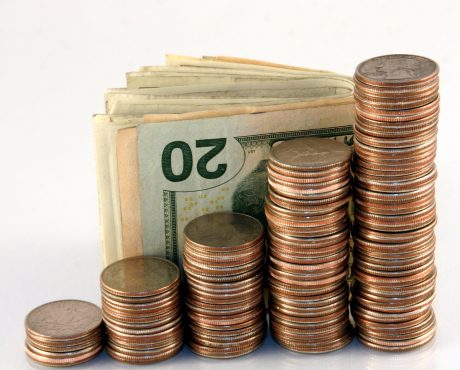This High-Dividend Stock Pays Investors Every Month
Big returns often come with big risk. For investors who want to use monthly dividend stocks to supplement their income, managing risk should definitely be a priority. But does that mean investors looking for monthly dividend stocks have to settle for a low-yield, low-risk company?
Not necessarily. For instance, Gladstone Capital Corporation (NASDAQ:GLAD) is currently yielding 8.6%, pays monthly dividends, and is running a solid business.
Gladstone is a business development company (BDC). Now, I know what you are thinking: BDCs are not known as the go-to choice for dividend investors. Since BDCs lend to small- and medium-sized companies, there is an intrinsic risk to the business.
However, note that BDCs are regulated by the U.S. Securities and Exchange Commission (SEC). There are multiple requirements that they need to follow. For instance, a BDC must maintain asset diversity by industry. Moreover, the amount of borrowing (debt and preferred stock) of a BDC cannot exceed its net worth.
Here’s the best part: The law requires BDCs to distribute at least 90% of their taxable income to shareholders every year in the form of dividends. Once a company meets the requirements to become a BDC, it is exempt from corporate-level income tax.
In other words, BDCs pass their profits directly to shareholders. In the U.S., many companies have to pay taxes at the corporate level, and then the dividends paid to shareholders are taxed again at the individual level. By being exempt from corporate taxes, BDCs reduce the effect of double taxation.
But what about the intrinsic risk associated with the lending business? Well, let’s take a closer look at this monthly dividend stock.
Gladstone specializes in making loans to lower-middle-market U.S. businesses. A typical firm that Gladstone lends to will have operating cash flow of $3.0 million to $15.0 million. The loans usually range from $7.0 million to $30.0 million, with terms of up to seven years.
Big Returns, Generous Dividends
In order to return value to investors, the company needs to make money. The good news is that Gladstone is running a very lucrative business. By the end of March 2017, the company’s average portfolio yield was 11.4%. (Source: “Gladstone Capital Corporation Reports Financial Results for its Second Quarter Ended March 31, 2017,” Gladstone Capital Corporation, May 3, 2017.)
As I mentioned earlier, BDCs have mandatory distribution requirements. So Gladstone is paying out most of its profits to shareholders in the form of dividends. Right now, the company pays $0.07 per share usually at the end of every month, giving GLAD stock an annual dividend yield of 8.6%.
To give you some perspective, the average yield of all S&P 500 companies right now is just 1.9%. This means if an investor wants to collect $5,000 of dividend income a year from an average S&P 500 company, they would need approximately $263,158 of initial investment. For the 8.6%-yielding Gladstone, an investment of just $58,139 would be able generate $5,000 in dividends in a year, and the dividends are paid monthly.
Managing the Risk
So we know that this monthly dividend stock pays handsome dividends. But what about dividend safety?
Well, on that front, the first thing to note is that, while the company has a high-yielding portfolio, 55.5% of the portfolio is invested in first-lien secured loans. This means that, in the event of a borrower liquidation, Gladstone will the first one in line to get paid.
The company has also invested 38.6% of its portfolio in secured second-lien debt, so 94.1% of Gladstone’s investment portfolio are in secured loans.
In the BDC world, the most risky type of investment is equity. For Gladstone, equity investments only make up 5.9% of its portfolio as of the end of the first quarter of 2017.
Diversification is another way through, which this monthly dividend stock manages its risk. Gladstone’s portfolio consists of investments in 44 companies coming from 21 different industries. The biggest industry, diversified service, accounts for just 17.2% of the portfolio’s fair value.
(Source: “Financial and Portfolio Overview for the Fiscal Quarter Ended March 31, 2017,” Gladstone Capital Corporation, last accessed June 13, 2017.)
As an investment company that manages hundreds of millions of dollars of assets, having a diversified portfolio is of utmost importance. By limiting its exposure to any one company or industry, Gladstone could reduce its portfolio risk should a single source of loans encounter problems.
And then there is the interest rate risk. For the most part of the last decade, interest rates have been kept artificially low by the U.S. Federal Reserve. But now they are rising. Whether the U.S. economy can handle higher interest rates is yet to be seen.
Also Read:
The 7 Top Monthly Dividend Stocks for 2017
Top 5 Cheap Stocks That Pay Monthly Dividends
But note that Gladstone is actually one of the few businesses that can benefit from higher interest rates. By the end of March, 88.8% of its portfolio was in variable rate loans. So, if interest rates keep increasing, the portfolio could generate higher net investment income, which will be distributed to investors.
At the end of the day, keep in mind that this monthly dividend stock has paid over 170 consecutive distributions. The company’s net investment income has also consistently covered 100% of its common stock distributions. For investors looking for a high-yield stock that pays dividends every month, Gladstone is worth taking a serious look at.
